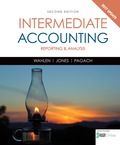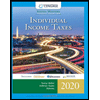
Concept explainers
Calculate the cost of ending inventory for 2016, 2017, and 2018 using the dollar-value LIFO retail inventory method.
Explanation of Solution
Dollar-Value-LIFO: This method shows all the inventory figures at dollar price rather than units. Under this inventory method, the units that are purchased last are sold first. Thus, it starts from the selling of the units recently purchased and ending with the beginning inventory.
Calculate the cost of ending inventory for 2016, 2017, and 2018 using the dollar-value LIFO retail inventory method:
For the year 2016:
Step 1: Calculate the amount of estimated ending inventory at retail.
| B Company | ||
| Ending Inventory Under DVL Retail Method | ||
| For the Year 2016 | ||
| Details | Cost ($) | Retail ($) |
| Beginning inventory | 50,000 | 100,000 |
| Add: Net purchase | 200,000 | 420,000 |
| Net additional markups | 20,000 | |
| Less: Net markdowns | 0 | (10,000) |
| Goods available for sale – Excluding beginning inventory | 200,000 | 430,000 |
| Goods available for sale – Including beginning inventory | 250,000 | 530,000 |
| Less: Net sales | (400,000) | |
| Estimated ending inventory at retail for 2016 | $130,000 | |
Table (1)
Step 2: Calculate ending inventory at retail at base-year prices.
Step 3: Calculate inventory change at retail at base year prices.
Step 4: Calculate the change at relevant current costs.
Step 5: Calculate ending inventory at cost.
Hence, the ending inventory at cost for 2016is $60,230.
Working note 1:
Calculate cost-to-retail ratio.
Working note 2:
Calculate cost-to-retail ratio.
For the year 2017:
Step 1: Calculate the amount of estimated ending inventory at retail.
| B Company | ||
| Ending Inventory Under DVL Retail Method | ||
| For the Year 2017 | ||
| Details | Cost ($) | Retail ($) |
| Beginning inventory | 60,230 | 130,000 |
| Add: Net purchase | 250,000 | 550,000 |
| Net additional markups | 30,000 | |
| Less: Net markdowns | 0 | (40,000) |
| Goods available for sale – Excluding beginning inventory | 250,000 | 540,000 |
| Goods available for sale – Including beginning inventory | 310,230 | 670,000 |
| Less: Net sales | (600,000) | |
| Estimated ending inventory at retail for 2017 | $70,000 | |
Table (2)
Step 2: Calculate ending inventory at retail at base-year prices.
Step 3: Calculate inventory change at retail at base year prices.
Step 4: Calculate the total change at relevant current costs.
(i)
Calculate the change at relevant current costs for 2016 (2016 layer):
(ii)
Calculate the change at relevant current costs for 2017(base-year layer):
(iii)
Calculate the total change at relevant current costs.
Step 5: Calculate ending inventory at cost.
Hence, the ending inventory at cost for 2017 is $30,435.
Working note 1:
Calculate cost-to-retail ratio for 2016.
Working note 2:
Calculate cost-to-retail ratio.
For the year 2018:
Step 1: Calculate the amount of estimated ending inventory at retail.
| B Company | ||
| Ending Inventory Under DVL Retail Method | ||
| For the Year 2018 | ||
| Details | Cost ($) | Retail ($) |
| Beginning inventory | 30,435 | 70,000 |
| Add: Net purchase | 240,000 | 500,000 |
| Net additional markups | 10,000 | |
| Less: Net markdowns | 0 | (20,000) |
| Goods available for sale – Excluding beginning inventory | 240,000 | 490,000 |
| Goods available for sale – Including beginning inventory | 270,435 | 560,000 |
| Less: Net sales | (450,000) | |
| Estimated ending inventory at retail for 2018 | $110,000 | |
Table (3)
Step 2: Calculate ending inventory at retail at base-year prices.
Step 3: Calculate inventory change at retail at base year prices.
Step 4: Calculate the change at relevant current costs.
Step 5: Calculate ending inventory at cost.
Hence, the ending inventory at cost for 2018 is$48,544.
Working note 1:
Calculate cost-to-retail ratio.
Want to see more full solutions like this?
Chapter 8 Solutions
EBK INTERMEDIATE ACCOUNTING: REPORTING
- Which of the following is a temporary account?A. EquipmentB. Accounts PayableC. Utilities ExpenseD. Common Stockarrow_forwardUnearned revenue becomes revenue when:A. A sale is madeB. Cash is receivedC. The service is performedD. The revenue is recordedarrow_forwardWhat is the effect of a debit to an expense account?A. Decreases expensesB. Increases equityC. Increases expensesD. Decreases assetsarrow_forward
- If total debits exceed total credits on a trial balance, the difference is most likely:A. A net lossB. A recording errorC. A net incomeD. An overstatement of assetsarrow_forwardWhich of the following accounts would be found on the post-closing trial balance?A. Service RevenueB. Salaries ExpenseC. Retained EarningsD. Dividendsarrow_forwardNeed answer What type of account is Service Revenue?A. AssetB. LiabilityC. EquityD. Revenuearrow_forward
- No chatgpt What type of account is Service Revenue?A. AssetB. LiabilityC. EquityD. Revenuearrow_forwardWhat type of account is Service Revenue?A. AssetB. LiabilityC. EquityD. Revenueneed helparrow_forwardno ai What type of account is Service Revenue?A. AssetB. LiabilityC. EquityD. Revenuearrow_forward
- What type of account is Service Revenue?A. AssetB. LiabilityC. EquityD. Revenuearrow_forwardNo chatgpt Which of the following would be found in the investing activities section of the cash flow statement?A. Cash received from issuing sharesB. Cash paid for dividendsC. Cash paid for new equipmentD. Cash received from customersarrow_forwardWhich of the following would be found in the investing activities section of the cash flow statement?A. Cash received from issuing sharesB. Cash paid for dividendsC. Cash paid for new equipmentD. Cash received from customersno aiarrow_forward
 Intermediate Accounting: Reporting And AnalysisAccountingISBN:9781337788281Author:James M. Wahlen, Jefferson P. Jones, Donald PagachPublisher:Cengage Learning
Intermediate Accounting: Reporting And AnalysisAccountingISBN:9781337788281Author:James M. Wahlen, Jefferson P. Jones, Donald PagachPublisher:Cengage Learning Individual Income TaxesAccountingISBN:9780357109731Author:HoffmanPublisher:CENGAGE LEARNING - CONSIGNMENT
Individual Income TaxesAccountingISBN:9780357109731Author:HoffmanPublisher:CENGAGE LEARNING - CONSIGNMENT- Principles of Accounting Volume 1AccountingISBN:9781947172685Author:OpenStaxPublisher:OpenStax College
 Financial AccountingAccountingISBN:9781305088436Author:Carl Warren, Jim Reeve, Jonathan DuchacPublisher:Cengage Learning
Financial AccountingAccountingISBN:9781305088436Author:Carl Warren, Jim Reeve, Jonathan DuchacPublisher:Cengage Learning Cornerstones of Financial AccountingAccountingISBN:9781337690881Author:Jay Rich, Jeff JonesPublisher:Cengage Learning
Cornerstones of Financial AccountingAccountingISBN:9781337690881Author:Jay Rich, Jeff JonesPublisher:Cengage Learning





